Type of resources
Topics
Keywords
Contact for the resource
Provided by
Years
Formats
Representation types
Update frequencies
-
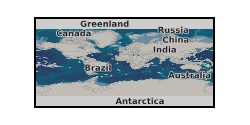
This poster on the UKCCSRC Call 1 project, Determination of water Solubility in CO2 Mixtures, was presented at the Cambridge Biannual, 02.04.14. Grant number: UKCCSRC-C1-21.
-
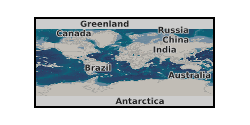
This poster on the UKCCSRC Call 2 project, Multiscale characterization of CO2 storage in the United Kingdom, was presented at the Cranfield Biannual, 21.04.15. Grant number: UKCCSRC-C2-197.
-
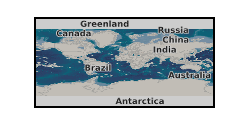
UKCCSRC Call 2 Project C2-189. The data, which was produced as a result of a UK CCSRC Call 2 funded project, consists of the GC-MS characterisation results for the products collected from the rejuvenation tests of degraded amine sorbents from carbon capture and related model degradation compounds. The examined amine-based sorbent samples included one heavily degraded industrial MEA solvent, one degraded solid-supported polyethyleneimine sample and 6 model MEA degradation compounds (N-(2-Hydroxyethyl)-ethylenediamine, glycylglycine, 2-Oxazolidinone, 1-(2-Hydroxyethyl)-2-imidazolidinone, 1-(2-Hydroxyethyl)-imidazole, N-Acetylethanolamine. Novel reductive approaches, which were investigated as a potential means for rejuvenating the degraded amine sorbents and where the samples for characterisation were produced, included catalytic hydrogenation, hydrous pyrolysis and hydropyrolysis with platinum, nickel and molybdenum as the catalysts used. The dataset also contains some preliminary CO2 absorption test results for a degraded MEA solvent before and after rejuvenation with hydrous pyrolysis using a continuous reactor. Full technical details of the research are contained in the final report submitted to UK CCSRC.
-
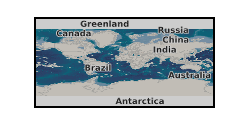
This presentation on the UKCCSRC Call 1 project, Tractable Equation of State for CO2 Mixtures, was presented at the Cranfield Biannual, 22.04.15. Grant number: UKCCSRC-C1-22.
-
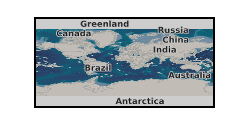
This review details the laboratory experiments that have investigated leakage of geologically stored CO2 (as of June 2013). These experiments have covered a range of leakage factors. Knowledge of these factors can both compliment and help inform any future experiments at the QICS site. As such, the report details what experiments have been performed in the lab to date, how lab experiments can inform QICS and how QICS could inform laboratory experiments. Grant number: UKCCSRC-C1-31.
-
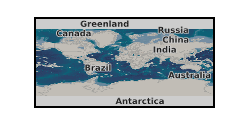
This poster on the UKCCSRC Call 1 project, Oxyfuel and EGR Processes in GT Combustion, was presented at the Nottingham Biannual, 04.08.13. Grant number: UKCCSRC-C1-26.
-
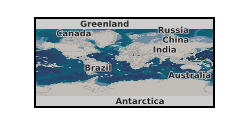
This report has been superseded by the paper: https://www.sciencedirect.com/science/article/pii/S1750583617301081. Grant number: UKCCSRC-C1-31. The NERC-funded QICS controlled CO2 release experiment (located offshore Oban, Scotland) mimics the formation of a new CO2 seep in the marine environment. At the site, CO2 is injected at an onshore well head, and a stainless steel pipe transports the CO2 under the seabed. Approximately 350 m offshore, the CO2 is released through a perforated screen into the 12 metres of overlying marine sediment, which is at approximately 10 metres water depth. During spring/summer 2012, 4.2 tonnes of CO2 was released at the QICS experimental site. A key element of risk assessment for the subsurface storage of CO2 is the monitoring of leaks from the subsurface in to the marine or terrestrial environments via sediments and soils. Chemical 'fingerprinting' of injected CO2 is widely considered a low cost, highly effective monitoring option, since effective application of tracers in CCS could provide information on (i) the movement, interaction and fate of injected CO2 in the subsurface and (ii) the detection (and quantification) of CO2 that has leaked from the storage complex to the surface. There is a need to develop geochemical techniques to differentiate between CO2 from natural processes, and the QICS site may provide excellent opportunity to trial geochemical tracers. This work aims to determine which chemical tracers are most suitable for CO2 tracing at the QICS facility and the research questions that tracer application can address. As such, this report includes: i. A review of current potential chemical tracers for CCS and their applications. ii. An analysis and comparison of costs, availability, environmental impact and detection limits for potential tracers. iii. An assessment of the above in the context of QICS (i.e: considering the CO2 will be released from the seabed (having passed from dense to gas phase), and having passed through water saturated sediment of the seabed, and into the water column. iv. An overview of the legal considerations for tracers in the UK. v. The injection method for tracers at the QICS site. vi. Required strategies for sampling the selected tracer. vii. Identify knowledge gaps in tracer studies which experiments at the QICS site could address.
-
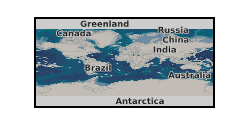
This poster on the UKCCSRC Call 1 project Oxyfuel and exhaust gas recirculation processes in gas turbine combustion for improved carbon capture performance was presented at the CSLF Call project poster reception, London, 27.06.16. Grant number: UKCCSRC-C1-26. This research is concerned with oxyfuel combustion in gas turbine applications, in particular concentrating on the use of modern swirl-stabilised burners. Oxyfuel is considered a particularly challenging idea, since the resultant burning velocity and flame temperatures will be significantly higher than what might be deemed as a practical or workable technology. For this reason it is widely accepted that EGR-derived CO2 will be used as a diluent and moderator for the reaction (in essence replacing the role of atmospheric nitrogen). The key challenges in developing oxyfuel gas turbine technology are therefore: • Flame stability at high temperatures and burning rates. • The use of CO2 as a combustion diluent. • Potential for CO emission into the capture plant. • Wide or variable operating envelopes across diluent concentrations. • Differences in the properties of N2 and CO2 giving rise to previously unmeasured flame heat release locations.
-
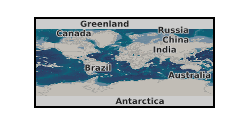
This poster on the UKCCSRC Call 2 project Shelter and Escape in the Event of a Release of CO2 from CCS Infrastructure (S-CAPE) was presented at the UKCCSRC Manchester Biannual Meeting, 13.04.2016. Grant number: UKCCSRC-C2-179.
-
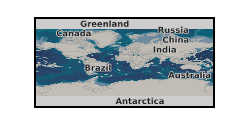
The NERC-funded QICS controlled CO2 release experiment (located offshore Oban, Scotland) mimics the formation of a new CO2 seep in the marine environment. At the site, CO2 is injected at an onshore well head, and a stainless steel pipe transports the CO2 under the seabed. Approximately 350 m offshore, the CO2 is released through a perforated screen into the 12 metres of overlying marine sediment, which is at approximately 10 metres water depth. During spring/summer 2012, 4.2 tonnes of CO2 was released at the QICS experimental site. CO2 bubbles emerged from the seafloor ~30m to the west of the site and individual plumes covered a total area of ~ 350m2. Bubble stream location was recording using audio (acoustic) and visual techniques (photography, video). Both techniques are useful for recording the general location of plumes. However their 2D nature made it hard to characterise individual plumes and their exact locations. The QICS1 experiment included 200 deployments/recoveries of instruments, collection of 1,300 samples, and installation of 1600 m of cable and placement of 24 cages of indicator species on the seabed. In order to aid planning and operation during potential further experiments at the site it would be beneficial to utilise a robust and accurate method of recording the locations of equipment, samples and CO2 bubble streams. In this review, the four main types of submarine geolocation technologies are detailed and compared, and best available models (as of June 2013) are detailed. Grant number: UKCCSRC-C1-31.
 NERC Data Catalogue Service
NERC Data Catalogue Service